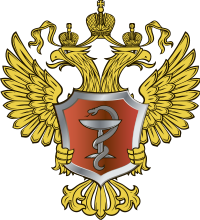INFORMATION TECHNOLOGIES IN EDUCATION AND THE DEVELOPMENT OF SOCIAL EMOTIONS: ARE THEY COMPLEMENTARY OR MUTUALLY EXCLUSIVE?
Keywords
digital technologies, social emotions, preschoolers, digital socialization, educational organization
Abstract
Relevance. In the modern world, due to the rapid development of information technologies and the great attention to this topic in the field of education, social and emotional spheres of human development are fading into the background. This implies the importance of the development of social emotions in the conditions of digitalization of society. However, these processes can also coexist if the educational process is competently built, starting from preschool age.
The purpose of the study. The study of the relationship between the active use of digital technologies by older preschool children and the development of social emotions in the learning process.
Research methods and sampling. To achieve the purpose of the study, the following methods were used: theoretical (analysis of psychological and pedagogical literature); empirical (test "Diagnostics of children's abilities to partner dialogue" by A.M. Shchetinina, which allows to assess the level of social emotions in children; questionnaire for parents to determine computer addiction in older preschoolers by V.G. Pisarev, which allows to assess the level of dependence in children from information technology as one of the main reasons for the low level of socialization; mathematical and statistical). The study involved 25 children of senior preschool age.
The main results. In order to obtain quantitative results, four levels of socialization of children were identified at the first stage: high, above average, medium and low.
During the diagnosis, it was found that, in general, the overall level of socialization in children is average. In order to obtain quantitative results at the second stage, a questionnaire was created on the Google Form platform based on the V.G. Pisarev test. Indicators of severity: 7-11 points – low level of dependence, 12-17 points – average level of dependence, 18-21 points – high level of dependence.
Conclusion. The pilot study showed that the level of social emotions in most children is at an average level, while the severity of computer dependence on the responses of parents in most children is represented at a high level. This suggests the need to create better conditions for children to interact with peers and adults outside the information space.
Video
Prezentation

Russian Psychological Society
e-mail: ruspsysoc@gmail.com

Federal Scientific Center for Psychological and Interdisciplinary Research,
Moscow, Russia
e-mail: forumdigitalchildhood@gmail.com

Psychology Department of the Lomonosov Moscow State University,
Moscow, Russia
e-mail: psy@psy.msu.ru









